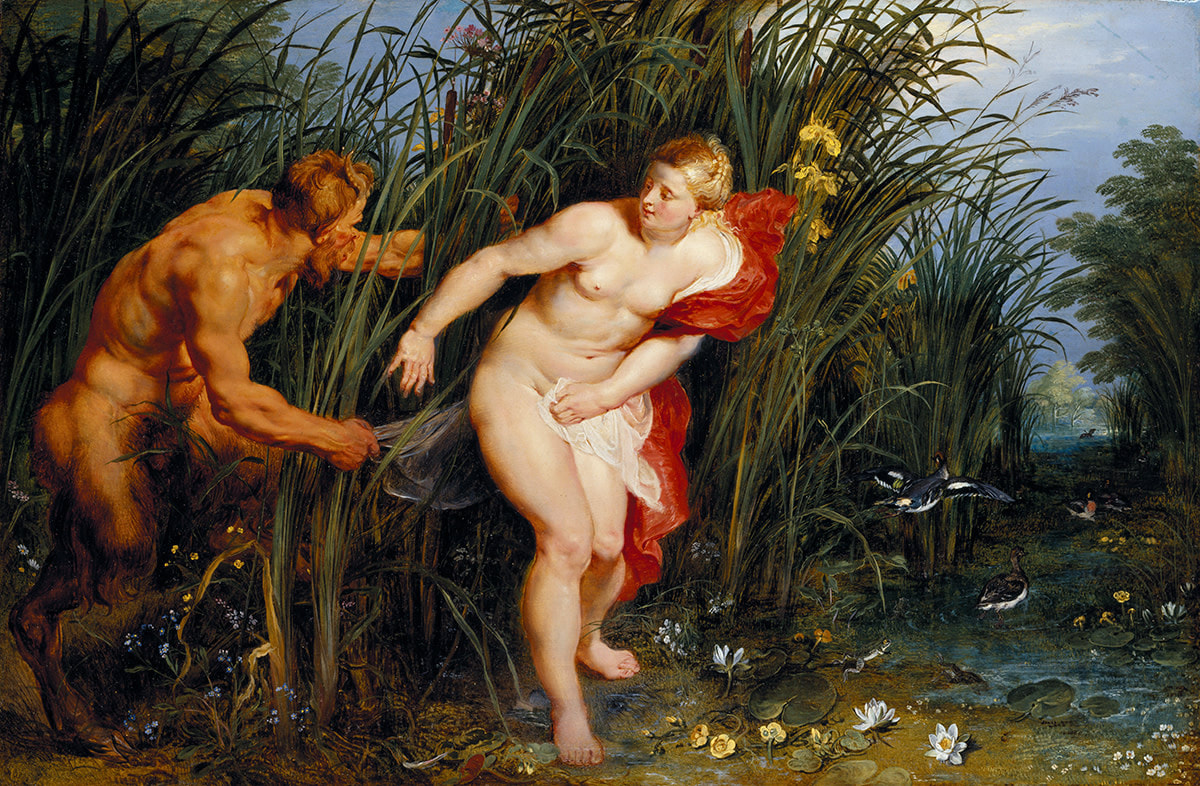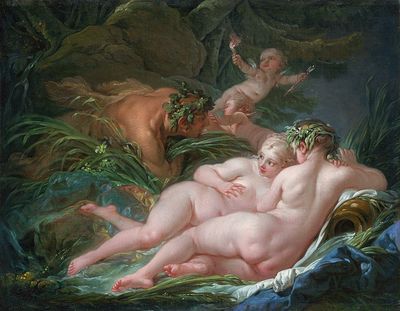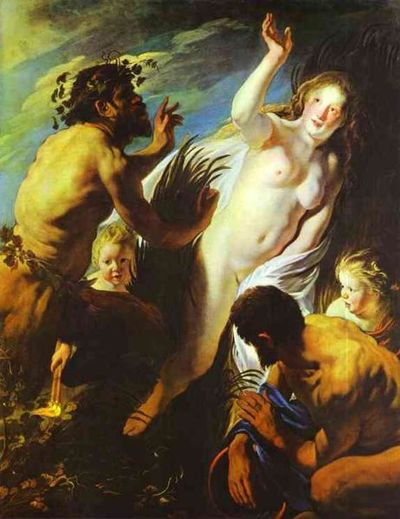Pan and Syrinx
Pan and Syrinx - Peter Paul Rubens (1577–1640) & Jan Brueghel the Elder (1568-1625) - Museumslandschaft Hessen Kassel
Date: 1617-19
Medium: Oil on panel
Dimensions: 40.0 x 61.0 cm
Medium: Oil on panel
Dimensions: 40.0 x 61.0 cm
|
A collaborative work between Peter Paul Rubens and Jan Brueghel the Elder, Pan and Syrinx was undertaken between 1617 and 1619; with Rubens painting the figures and Brueghel the background landscape.
Painted using oil on panel, Pan and Syrinx shows a tale from Greek mythology, with the rustic god Pan espying the beautiful Naiad Syrinx as she bathes. The lustful Pan chases after Syrinx, but the Naiad which to preserve a chastity prays that she might be saved, and her father, the Potamoi Ladon, answers by transforming her into river reeds. Pan would subsequently cut some of these reeds to make a syrinx, the pan-pipes for which the god is famed. More information about Pan and Syrinx can be found here - (website opens in new window) |
|
Peter Paul Rubens |
Jan Brueghel the Elder |
|
Born: 28 June 1577; Siegen, Germany
Died: 30 May 1640; Antwerp, Belgium Nationality: Flemish Art Movement: Baroque Painting School: Flemish School, Antwerp School |
Born: 1568; Brussels, Belgium
Died: 13 January 1625; Antwerp, Belgium Nationality: Flemish Art Movement: Mannerism and Baroque Painting School: Flemish School, Antwerp School |


